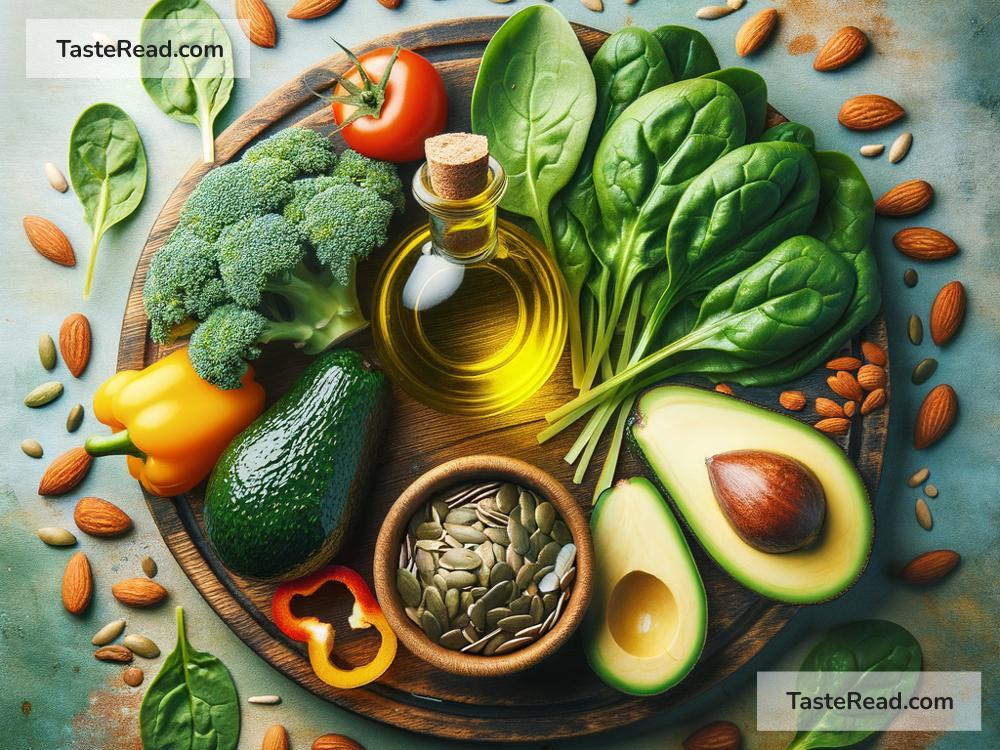How to Incorporate More Tocopherol-Rich Foods Into Your Diet
Our bodies need a variety of nutrients to stay healthy, and one important one is tocopherol, commonly known as vitamin E. This vitamin is essential for maintaining good skin, improving immune function, and protecting our cells from damage caused by free radicals. If you ever feel like you’re not getting enough vitamin E, you’re not alone! Many people unknowingly skip out on tocopherol-rich foods in their daily diet.
The good news is that incorporating more vitamin E into your meals is super easy and doesn’t require any extreme diet changes. In this article, we’ll explain what tocopherol is, why it’s important, and simple ways to add foods rich in vitamin E to your plate.
What Is Vitamin E (Tocopherol)?
Vitamin E is a fat-soluble vitamin, meaning your body absorbs it alongside dietary fats. It primarily acts as an antioxidant, protecting your cells from oxidative stress. Think of it as your body’s shield against harmful molecules called free radicals, which can contribute to aging and chronic diseases.
Vitamin E is especially vital for maintaining healthy skin, vision, immune health, and brain function. Since our bodies don’t produce it on their own, we must get it from the food we eat.
Why Incorporate Tocopherol-Rich Foods Into Your Diet?
A balanced diet rich in vitamin E can have several health benefits:
- Supports Heart Health: Vitamin E helps prevent the oxidation of bad cholesterol (LDL), which may contribute to heart disease.
- Promotes Skin Health: It can keep your skin hydrated and promote healing.
- Boosts Immunity: Vitamin E strengthens your immune system, helping you fight off infections.
- Protects Against Chronic Diseases: By reducing oxidative stress, tocopherol can safeguard your cells from long-term damage.
Most people can meet their daily vitamin E needs (about 15 milligrams for adults) through food alone, but mild deficiencies sometimes occur if your diet is low in tocopherol-rich foods.
Best Foods Rich in Vitamin E
Before we dive into how to add these foods to your diet, let’s look at some of the best sources of vitamin E:
- Nuts and Seeds: Almonds, sunflower seeds, hazelnuts, and peanuts are excellent sources of tocopherol.
- Vegetable Oils: Olive oil, sunflower oil, and canola oil are rich in vitamin E and easy to use in cooking.
- Leafy Green Vegetables: Spinach, kale, and broccoli contain vitamin E along with other essential nutrients.
- Avocados: This creamy fruit is packed with vitamin E and is a versatile addition to meals and snacks.
- Seafood: Salmon, trout, and oysters contain vitamin E alongside healthy fats.
- Whole Grains: Wheat germ and whole-grain breads or cereals are good sources of vitamin E.
- Fruits: Mangoes, kiwis, and blackberries contain smaller amounts of vitamin E but can complement your diet.
How to Incorporate More Tocopherol-Rich Foods Into Your Diet
Here are some simple and practical ways to sneak more vitamin E into your daily meals:
1. Start Your Day with Vitamin E
Breakfast is the perfect opportunity to add vitamin E-rich foods to your diet. Try including:
- Almond butter on toast: Spread almond butter on whole-grain toast for a nutritious start to the day.
- Smoothies: Blend spinach, avocado, and mango into a delicious vitamin E-packed smoothie.
- Sunflower seeds with oatmeal: Sprinkle a handful of sunflower seeds onto oatmeal or yogurt.
2. Snack Smart
Instead of reaching for processed snacks, opt for natural, tocopherol-rich options:
- Grab a handful of nuts like almonds, hazelnuts, or peanuts.
- Enjoy avocado slices on whole-grain crackers.
- Snack on fresh fruits like mango or kiwi with a drizzle of yogurt.
3. Level Up Your Salads
Salads are an easy way to incorporate vitamin E into your lunch or dinner. Boost your salad with:
- Spinach or kale as a base.
- Avocado slices for creaminess.
- Sunflower seeds as a crunchy topping.
- Olive oil-based dressings for a flavorful and tocopherol-rich drizzle.
4. Change Up Your Cooking Oils
Swap out your regular cooking oil for healthier options such as sunflower oil or extra virgin olive oil. Use these oils to sauté vegetables, roast potatoes, or drizzle over cooked grains.
5. Enjoy Tocopherol-Rich Proteins
Incorporate vitamin E-rich proteins into your meals. For instance:
- Grill salmon for dinner and serve it alongside steamed spinach.
- Add roasted trout or baked oysters to your menu.
6. Get Creative with Wheat Germ
Wheat germ is a hidden gem when it comes to vitamin E. Add it to your recipes like:
- Baking: Mix wheat germ into muffins, pancakes, or bread recipes.
- Yogurt: Stir it into yogurt or a smoothie bowl for a nutrient boost.
- Cereal: Sprinkle it over breakfast cereal for a crunchy touch.
Final Thoughts
Incorporating tocopherol-rich foods into your diet doesn’t have to be complicated or expensive. From adding nuts to your snacks to choosing olive oil for cooking, these small changes can make a big difference to your health. With some planning and creativity, you’ll be hitting your vitamin E goals without even realizing it!
Remember, a balanced diet is about variety—so aim to include a mix of tocopherol-rich foods alongside other nutrients for optimal health. Your body will thank you!


